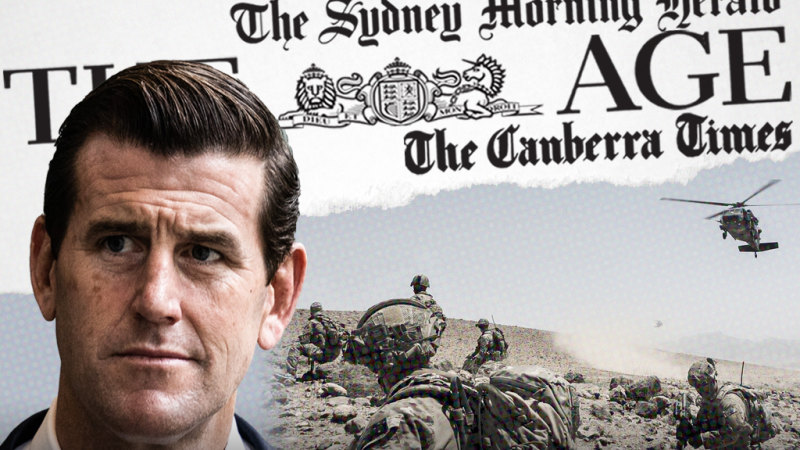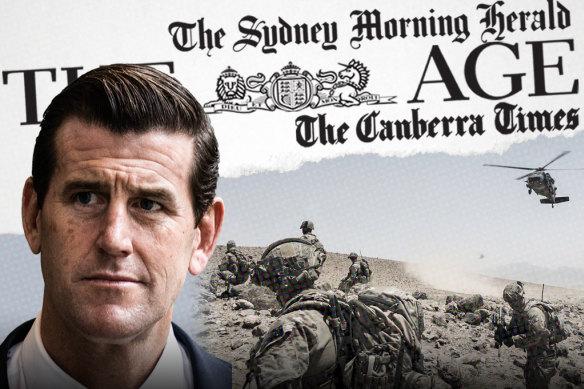Save articles for later
Add articles to your saved list and come back to them any time.
The judgment in decorated soldier Ben Roberts-Smith’s defamation case will be delivered next week, following a multimillion-dollar court battle billed as a test of public interest journalism and a quasi war crimes investigation.
The judgment has been ten months in the making. Justice Anthony Besanko concluded public hearings in the case against The Age, The Sydney Morning Herald and The Canberra Times on July 27 last year, after 110 days, 41 witnesses and more than $25 million in legal costs.
The judgment will be delivered on Thursday, June 1, at 2.15pm.
Justice Anthony Besanko is set to deliver his judgment in the long-running Ben Roberts-Smith litigation.Credit: Nine
Roberts-Smith, a former Special Air Service corporal, launched defamation proceedings against the mastheads in August 2018 over a series of six articles, published between June and August that year. Half of the articles are online versions of print stories.
University of Sydney Professor David Rolph, an expert in defamation law, said “the stakes on both sides are incredibly high” and the case was “a test of public interest journalism”.
“It’s clearly one of the most high-stakes defamation cases that we’ve seen in recent times,” Rolph said.
‘It’s clearly one of the most high stakes defamation cases that we’ve seen in recent times.’
Roberts-Smith – awarded the Victoria Cross, Australia’s highest military honour, in 2011 for his actions in a 2010 battle in Tizak, Afghanistan – alleges the newspapers wrongly accused him of war crimes, bullying a fellow soldier, and an act of domestic violence against a former lover.
Besanko will rule on whether those meanings were conveyed by the articles and whether he was identified by the reports, four of which did not name him, and then consider any defences as required.
The newspapers say the first four articles did not identify Roberts-Smith and none conveyed the meanings alleged, but they seek to rely chiefly on a defence of truth to any of the meanings found to have been conveyed.
As part of their truth defence, the newspapers allege Roberts-Smith was involved in the murder of five unarmed prisoners while on deployment in Afghanistan between 2009 and 2012, contrary to the rules of engagement that bound the SAS. Roberts-Smith denies the claims.
The legal issues in the case, including the truth defence, were well known, Rolph said. “It is the factual issues in this case that are of incredible complexity,” he said.
Rolph said the litigation was “perhaps the last case to be decided pre the most recent [defamation] reforms, which introduced a public interest defence” in most jurisdictions.
The new public interest defence started in July 2021, after the articles were published, in NSW, Victoria, Queensland, South Australia and the ACT. Tasmania followed suit in November that year. Western Australia and the Northern Territory have yet to make the changes.
The Roberts-Smith decision would give a “useful indication about the limitations or strengths of Australian defamation law before the reform”, Rolph said.
Under the truth defence, the media outlets needed to prove on the balance of probabilities – meaning it was more likely than not – that Roberts-Smith was involved in the murder of the five unarmed prisoners, among other claims.
While this is less onerous than the criminal standard of proof beyond reasonable doubt, the so-called Briginshaw principle applies in civil cases involving serious allegations and requires courts to proceed cautiously in making grave findings.
“The standard of proof is the balance of probabilities, but where you have serious allegations, a court, in order to be satisfied something is true, will have to take into account the seriousness of the allegation,” Rolph said.
The Morning Edition newsletter is our guide to the day’s most important and interesting stories, analysis and insights. Sign up here.
Most Viewed in National
From our partners
Source: Read Full Article

